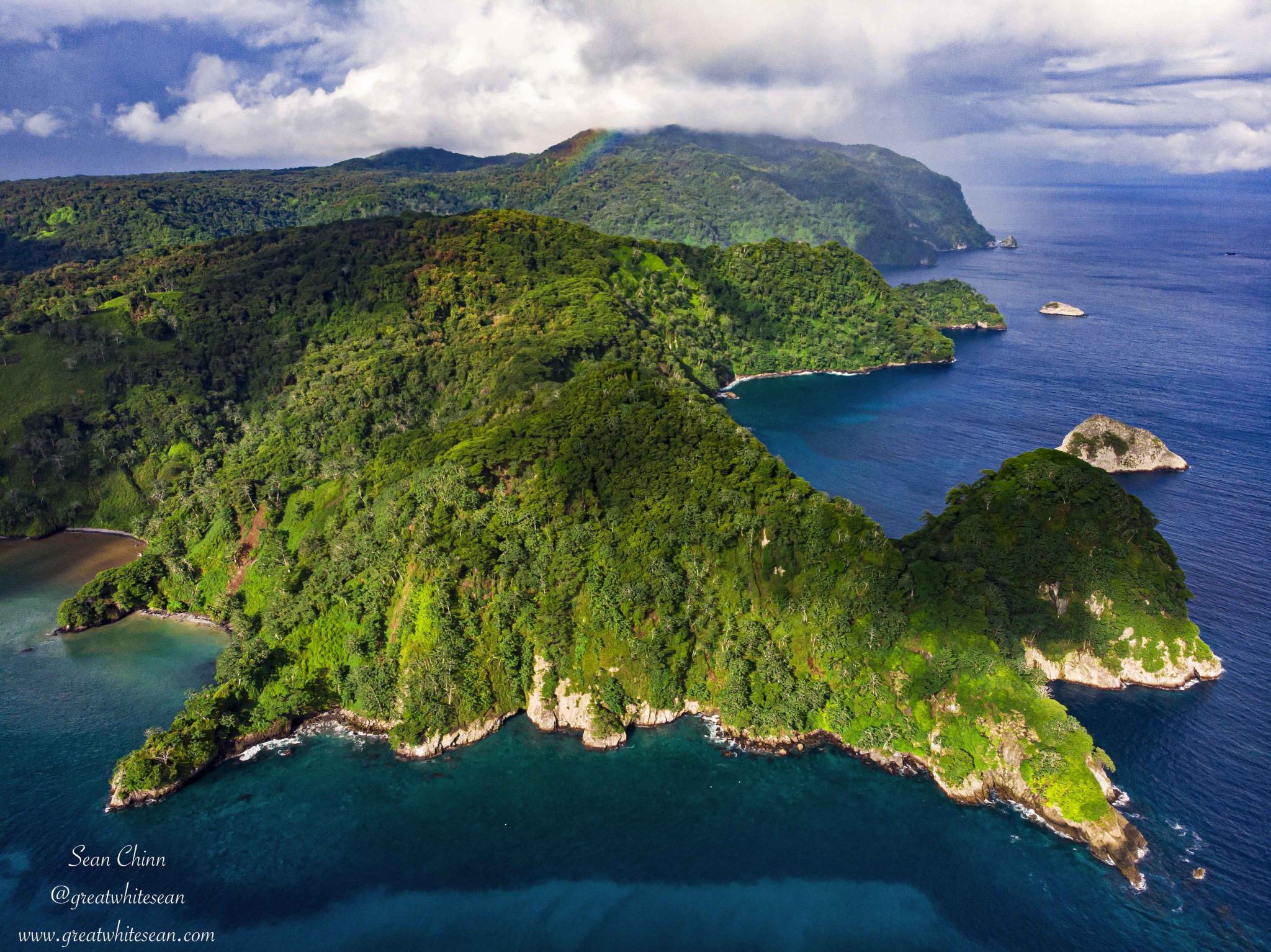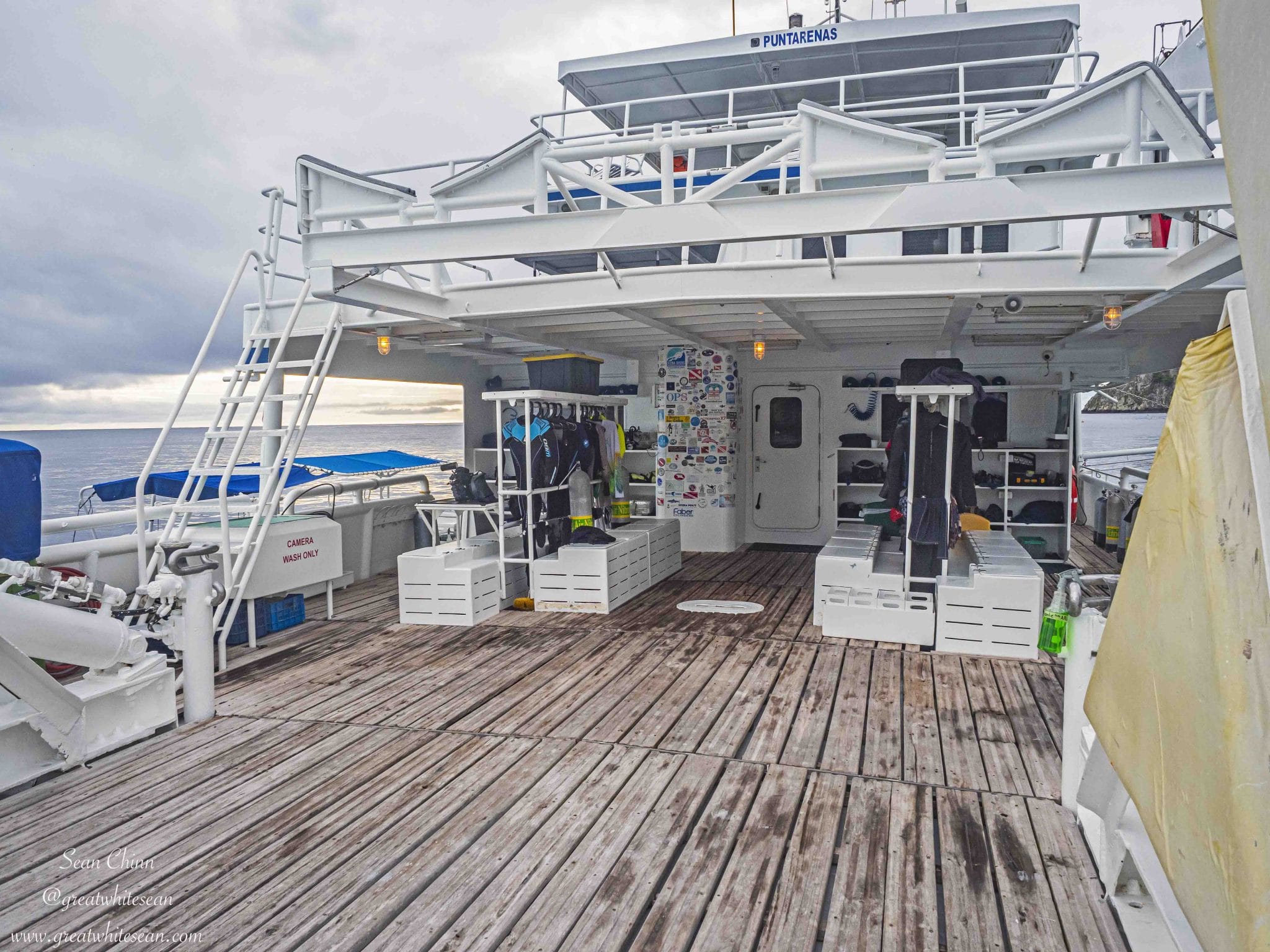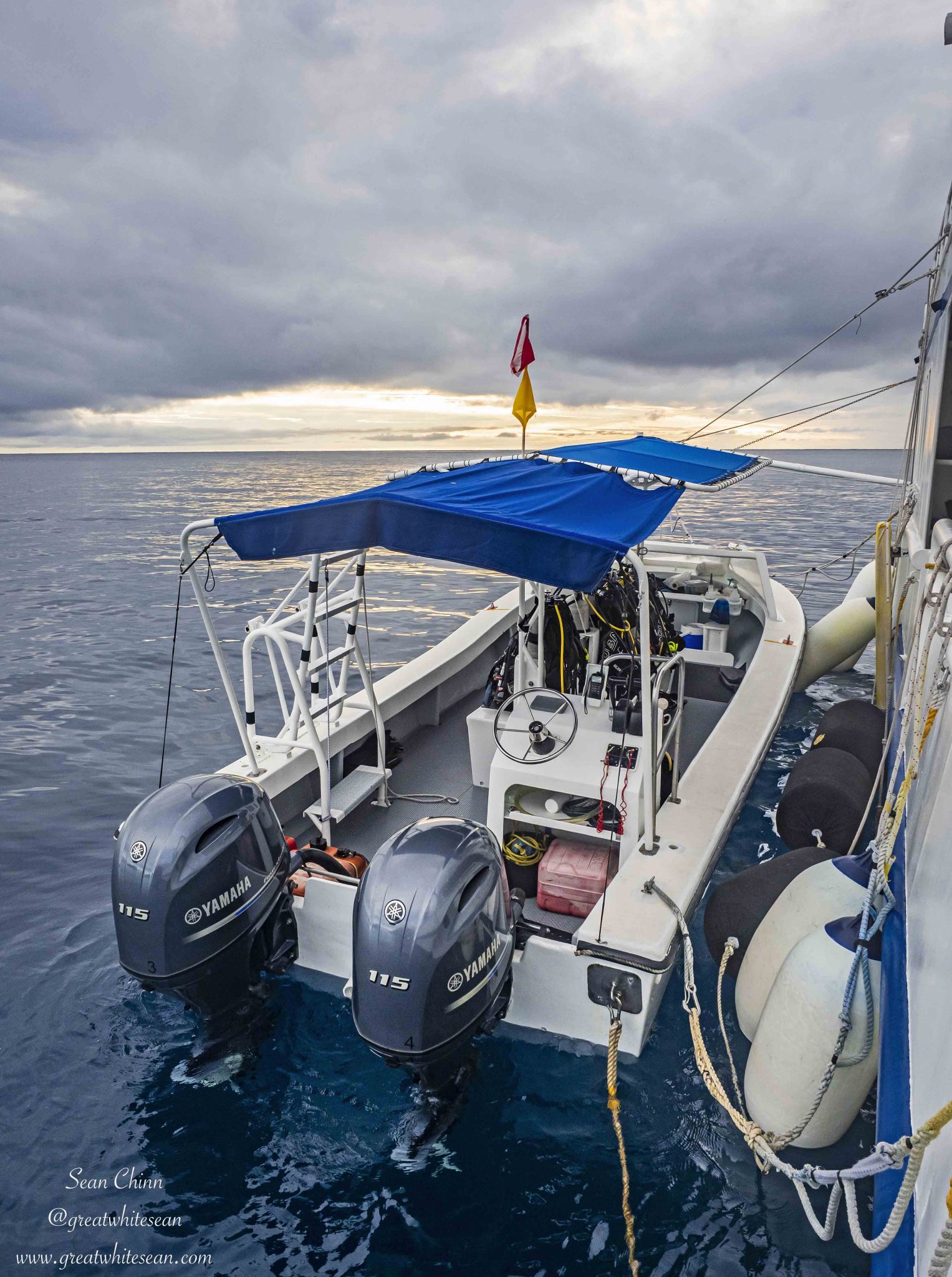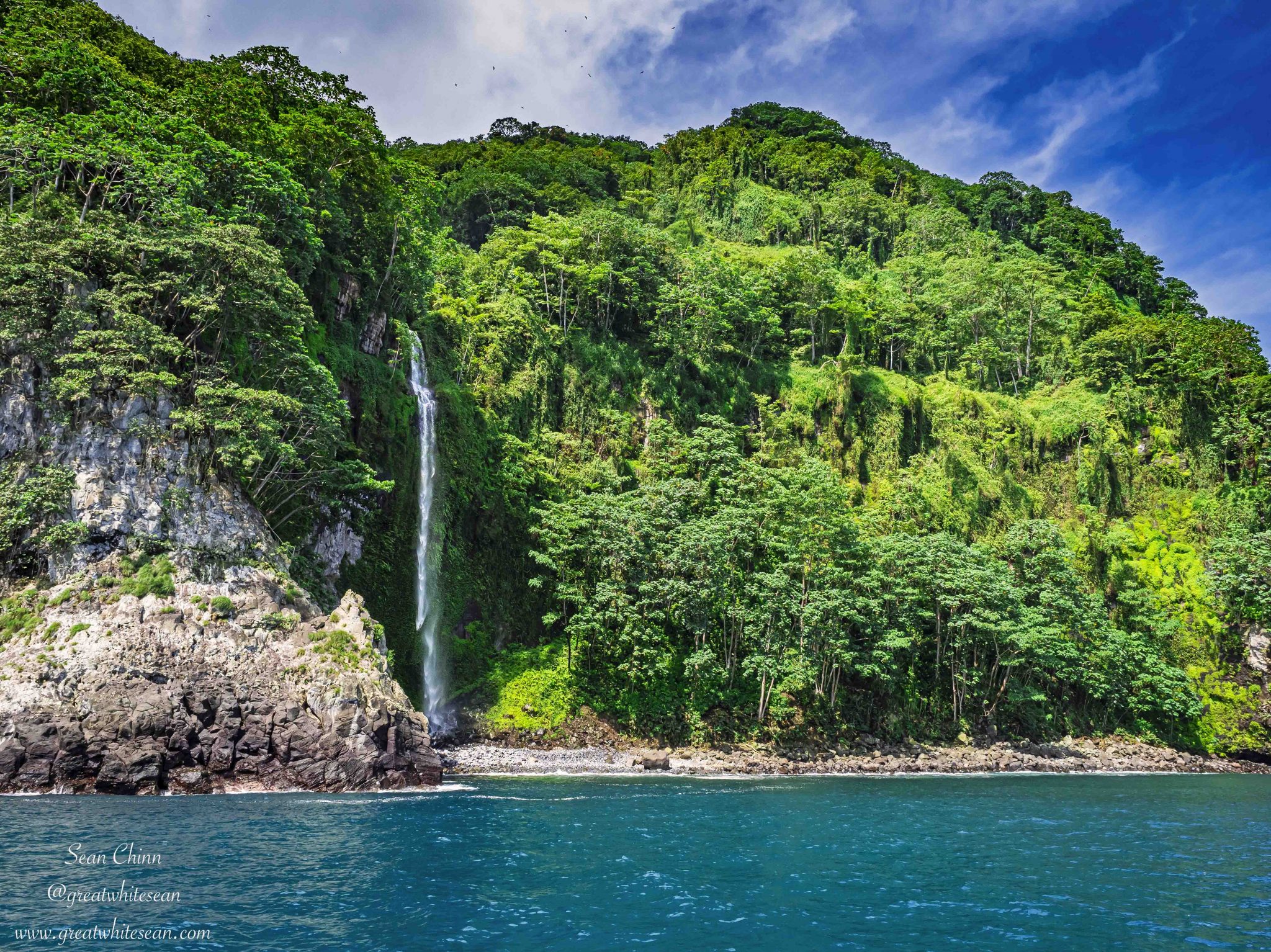News
Dive Wild in Cocos!
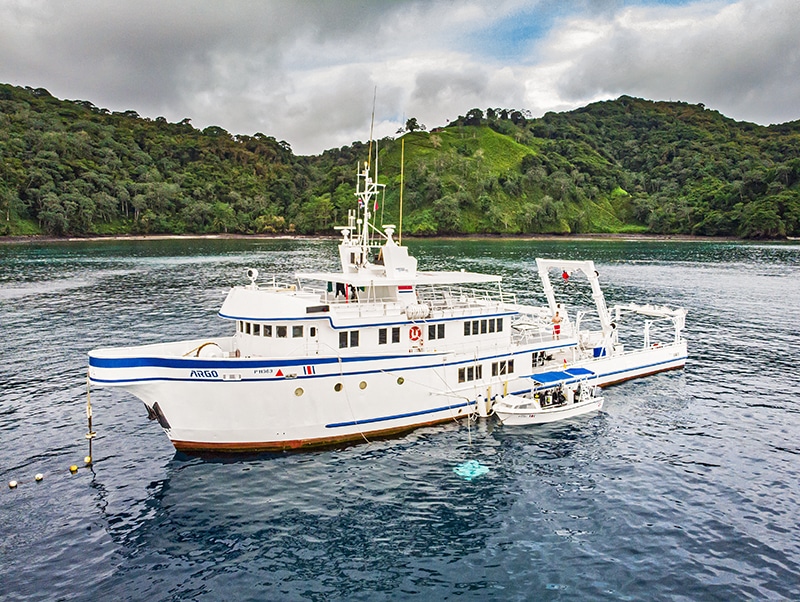
Cocos Island has been one of those bucket list dive destinations for all of my diving life. Back in around 2009/10 my friend was continuously encouraging me to take up diving knowing I loved the water and wildlife so much. It still took me some time to commit though and that commitment came after watching his videos from his Cocos Island trip. Seeing close up video of an abundance of sharks was something I could definitely sink my teeth into.
Fast forward nearly a decade and I was fortunate to win Undersea Hunters “Dive Wild” Instagram Photography Competition in 2019. This was a dream come true for me as having a young family meant the expense of such a dive trip was a little out of reach. Now I had the opportunity of a lifetime to dive one of the most sort after dive locations in the world. A trip was planned for May/June 2020 and the excitement with each passing day was immense BUT then Covid hit. Unfortunately, as Covid took a hold around the world the trip had to be postponed on four different occasions until I finally got my chance in May this year to visit Costa Rica and the infamous Cocos Island with Undersea Hunter onboard Argo.
My trip on the Argo began on May 16th. A 130-foot vessel that has a mix of research work ship and luxury yacht, providing 9 spacious rooms to accommodate 18 guests (14 on this particular trip). It also offers a once in a lifetime opportunity to dive a few hundred metres below the surface on the DeepSea Submersible. A trip on the DeepSea Submersible comes at an extra cost but would be such a unique opportunity that was unfortunately not available for our specific trip. Argo’s ability to transport the DeepSea Submersible meant the dive deck and outside space was more than enough for the 14 dive guests plus guides to get ready and then board the two dive skiffs to transport to the dive sites. A large and comfortable lounge and dining area coupled with a large sundeck provided ample space for relaxing on the long journey and between dives.
Once everybody was checked in onboard and all luggage accounted for, we set off on the mammoth voyage to Cocos Island around 350 miles into the Pacific Ocean. This was going to take around 36 hours and gave us plenty of time to get organised for the 7 days of diving we had planned over the coming week. Thankfully, after having not been on a liveaboard for 2 years and on a boat at sea for 9 months the crossing was very kind to me. A gentle swell meant any sea sickness was kept at a bare minimum and I was able to function and pay attention. Particularly important for the boat briefing and one that I was very impressed with.
Our host for the trip Juan Manuel was entertaining and kept us engaged throughout. The dedication to safety is what really resonated with me. It’s easy to get complacent when it comes to liveaboard diving and forget about the dangers that come with living on a boat. While Covid protocols were obviously dealt with, it was the issues with potential fires etc that I was impressed with. Unfortunately, we are probably all aware of the devastating liveaboard fires in recent years.
With times of adversity comes lessons and in some cases change. I believe safety has always been paramount, but with the fact that one of the fires was attributed to an electrical charging fault, it was particularly encouraging being told that anything left on charge in the common areas unattended at night would be unplugged for safety reasons. It was also pointed out that members of the crew would take it in turns to do 20-minute checks and sensors are used to ensure checks are being made. While we were all tired from our busy diving days and early nights were common throughout the guests, I did happen to stay up later one night to watch a film. It was pleasing to witness these checks first hand as the captain walked through numerous times marking the sensor each time.
It’s safe to say I felt completely at ease on the Argo for my trip to Cocos Island. The staff were accommodating for all our needs and went above and beyond to make sure our trip was safe and comfortable. The food was a delicious buffet and there were always alternatives if you didn’t eat a particular dish, while the diving from the two skiffs was well run with great help onboard and great guiding. I also feel I need to make a special mention for the theatre that was the scene of our entertainment – the island itself. Cocos Island was one of the most awe-inspiring places I’ve ever visited. An island of a thousand waterfalls and dense tropical rainforest it left me amazed with each passing turn – and underwater it was pretty special too! Stay tuned for my next blog with an overview of the week’s diving and also look out for the full article in Dive Travel Adventures soon.
More information
Find out more about Sean, his photography and his hosted trips at: www.greatwhitesean.com
Blogs
Northern Red Sea Reefs and Wrecks Trip Report, Part 2: Wall to Wall Wrecks

Jake Davies boards Ghazala Explorer for an unforgettable Red Sea diving experience…
The second day’s diving was a day full of wreck diving at Abu Nuhas, which included the Chrisoula K, Carnatic, and Ghiannis D. The first dive of the day was onto the Chrisoula K, also known as the wreck of tiles. The 98m vessel remains largely intact where she was loaded with tiles which can be seen throughout the hold. The stern sits at 26m and the bow just below the surface. One of the highlights of the wreck is heading inside and seeing the workroom where the machinery used for cutting the tiles are perfectly intact. The bow provided some relaxing scenery as the bright sunlight highlighted the colours of the soft coral reef and the many reef fish.

Following breakfast, we then headed to the next wreck, which was the Carnatic. The Carnatic is an 89.9m sail steamer vessel that was built in Britain back in 1862. She ran aground on the reef back in 1869 and remains at 27m. At the time, she was carrying a range of items, including 40,000 sterling in gold. An impressive wreck where much of the superstructure remains, and the two large masts lay on the seafloor. The wooden ribs of the hull provide structures for lots of soft corals, and into the stern section, the light beams through, bouncing off the large shoals of glass fish that can be found using the structure as shelter from the larger predators that are found outside of the wreck.

The final wreck at Abu Nuhas was the Ghiannis D, originally called ‘Shoyo Maru,’ which was 99.5m long and built in Japan back in 1969 before becoming a Greek-registered cargo ship in 1980. The ship then ran aground on the reef on April 19th, 1983, and now sits at the bottom at a depth of 27m. Heading down the line, the stern of the ship remains in good condition compared to the rest of the hull. The highlight of the wreck, though, is heading into the stern section and down the flights of stairs to enter the engine room, which remains in good condition and is definitely worth exploring. After exploring the interior section of the ship, we then headed over to see the rest of the superstructure, where it’s particularly interesting to see the large table corals that have grown at the bow relatively quickly considering the date the ship sank. After surfacing and enjoying some afternoon snacks, we made sure everything was strapped down and secured as we would be heading north and crossing the Gulf of Suez, where the winds were still creating plenty of chop.

The next morning, it was a short hop to Ras Mohammed Nature Reserve for the next couple of days of diving. The 6am wake-up call came along with the briefing for the first site we would be diving, which was Shark & Yolanda. The low current conditions allowed us to start the dive at Anemone City, where we would drift along the steep, coral-filled wall. These dives involved drifts, as mooring in Ras Mohammed wasn’t allowed to protect the reefs. As a dive site, Shark & Yolanda is well-known and historically had a lot of sharks, but unfortunately not so many in recent years, especially not so early in the season. However, there was always a chance when looking out into the blue.

The gentle drift took us along the steep walls of the site, with plenty of anemone fish to be seen and a huge variety of corals. It wasn’t long into the dive before we were accompanied by a hawksbill turtle, who drifted with us between the two atolls before parting ways. Between the two reefs, the shallow patch with parts of coral heads surrounded by sand provided the chance to see a few blue-spotted stingrays that were mainly resting underneath the corals and are always a pleasure to see. With this being the morning dive, the early sunlight lit up the walls, providing tranquil moments. Looking out into the blue, there was very little to be seen, but a small shoal of batfish shimmering underneath the sunlight was a moment to capture as we watched them swim by as they watched us.

Towards the end of the dive, we stopped at the wreck of the Jolanda where the seafloor was scattered with toilets from the containers it was carrying. This provided a unique site to make a safety stop, which was also accompanied by a large barracuda slowly swimming by, along with a hawksbill turtle calmly swimming over the reef as the sun rays danced in the distance.
For the next dive, we headed north to the Strait of Tiran to explore the reefs situated between Tiran Island and Sharm El Sheik, which were named after the British divers who had found them. We started on Jackson before heading to Gordons Reef, where we also did the night dive. All the atolls at these sites provided stunning, bustling coral reefs close to the surface and steep walls to swim along, which always provided the opportunity to keep an eye out for some of the larger species that can be seen in the blue. Midwater around Jackson Reef was filled with red-toothed triggerfish and shoals of banner fish, which at times were so dense that you couldn’t see into the blue. Moments went by peacefully as we enjoyed the slow drift above the reef, watching these shoals swim around under the mid-afternoon sun.

The night dive at Gordon’s Reef was mainly among the stacks of corals surrounded by sand, which was great to explore under the darkness. After some time circling the corals, we came across what we were really hoping to find, and that was an octopus hunting on the reef. We spent the majority of the dive just watching it crawl among the reef, blending into its changing surroundings through changes in colour and skin texture. It’s always so fascinating and captivating to watch these incredibly intelligent animals, in awe of their ability to carry out these physical changes to perfectly blend into the reef. Before we knew it, it was time to head back to the boat to enjoy a well-deserved tasty dinner prepared by the talented chefs onboard.
Check in for the 3rd and final part of this series from Jake tomorrow!
To find out more about the Northern Red Sea reef and wrecks itineraries aboard Ghazala Explorer, or to book, contact Scuba Travel now:
Email: dive@scubatravel.com
Tel: +44 (0)1483 411590
Photos: Jake Davies / Avalon.Red
Marine Life & Conservation
Double Bubble for Basking Sharks

 The Shark Trust is excited to announce that, for two more days only, all donations, large or small, will be doubled in the Big Give Green Match Fund!
The Shark Trust is excited to announce that, for two more days only, all donations, large or small, will be doubled in the Big Give Green Match Fund!
Donate to Basking in Nature: Sighting Giants
The Shark Trust is hoping to raise £10k which will be doubled to £20k. This will go towards Basking in Nature: Sighting Giants. And they need YOUR help to reach they’re goal.
The Shark Trust’s citizen science project is to monitor and assess basking sharks through sightings; encouraging data collection, community engagement, and promoting nature accessibility. This initiative aims to enhance health and wellbeing by fostering a deeper connection with British Sharks.
Campaign Aims
- Increase citizen science reporting of Basking Sharks and other shark sightings to help inform shark and ray conservation.
- Provide educational talks about the diverse range of sharks and rays in British waters and accessible identification guides!
- Create engaging and fun information panels on how to ID the amazing sharks and rays we have on our doorstep! These can be used on coastal paths around the Southwest. With activities and information on how you can make a difference for sharks and rays!
- Promote mental wellbeing through increasing time in nature and discovering the wonders beneath the waves!
Donate, and double your impact. Click Here
-

 News3 months ago
News3 months agoHone your underwater photography skills with Alphamarine Photography at Red Sea Diving Safari in March
-

 News3 months ago
News3 months agoCapturing Critters in Lembeh Underwater Photography Workshop 2024: Event Roundup
-

 Marine Life & Conservation Blogs2 months ago
Marine Life & Conservation Blogs2 months agoCreature Feature: Swell Sharks
-

 Blogs2 months ago
Blogs2 months agoMurex Resorts: Passport to Paradise!
-

 Blogs2 months ago
Blogs2 months agoDiver Discovering Whale Skeletons Beneath Ice Judged World’s Best Underwater Photograph
-

 Gear Reviews2 months ago
Gear Reviews2 months agoGear Review: Oceanic+ Dive Housing for iPhone
-

 Marine Life & Conservation2 months ago
Marine Life & Conservation2 months agoSave the Manatee Club launches brand new webcams at Silver Springs State Park, Florida
-

 News3 months ago
News3 months agoWorld’s Best Underwater Photographers Unveil Breathtaking Images at World Shootout 2023


